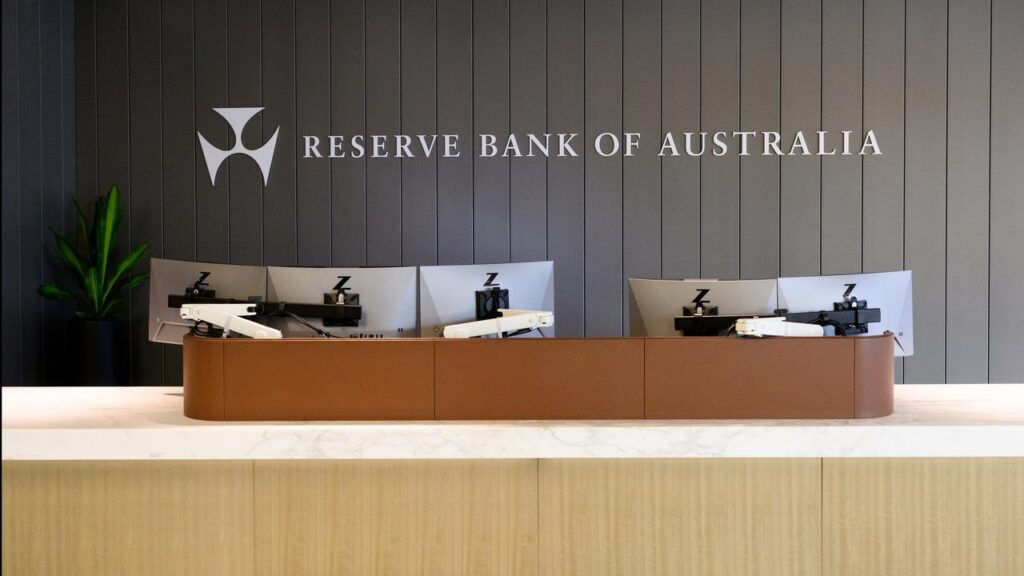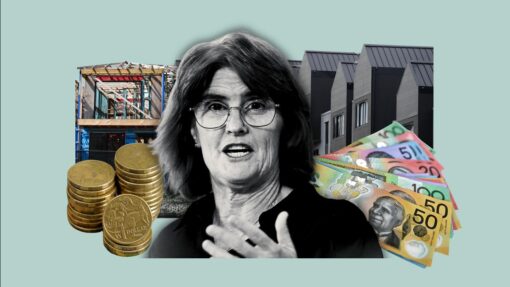Transparency boost: Reserve Bank homes in on key change
Jacob Shteyman |

How Reserve Bank board members vote on interest rate decisions is set to become public knowledge, with the bank and the federal government positively disposed to implementing the transparency-boosting reform.
The government’s landmark review into the central bank’s operations recommended it publish non-attributed votes in the board’s post-meeting statement when it does not reach a consensus decision on monetary policy.
While most of the review’s 51 recommendations have already been accepted, a decision on board votes was put off until the central bank’s new monetary policy board could meet and deliberate on the proposal.

With two meetings under the new board’s belt, Reserve Bank governor Michele Bullock met with Treasurer Jim Chalmers on Wednesday to discuss the remaining changes, including signing an updated statement on the conduct of monetary policy.
Dr Chalmers said the reforms were closer to completion – “and that’s a very good thing”.
“They’re all about reinforcing the Reserve Bank’s independence, clarifying its mandate, modernising its structures and strengthening its accountability,” he said.
“I pay tribute to Governor Bullock, the bank’s boards and its leadership for the reforms already in place and the constructive discussions we’ve been having about the rest.
“A lot of progress has been made already and I’m looking forward to bedding down these final changes.”
Changes made to the Reserve Bank’s operations have increased its transparency and communication with the public after the review found it had not always been clear or detailed enough.
The review was prompted in part by previous governor Philip Lowe’s forward guidance debacle.

In 2021, amid great uncertainty at the height of the COVID-19 pandemic, Dr Lowe sought to reassure borrowers with comments that he did not expect the next cash rate rise to come into 2024, which the public eventually perceived to be a broken promise.
Better communication was seen as a way to prevent such incidents from recurring.
But publishing anonymised member votes has limited benefit when the board tends to vote unanimously most of the time.
Critics say the consensus-focused board is prone to groupthink.
Peter Tulip, chief economist at the Centre for Independent Studies and a former Reserve Bank researcher, said many board members could not articulate a coherent position on monetary policy, discouraging dissenting points of view.
“But my strong view is that we don’t want board members like that on the board. Anonymity shields them,” he told AAP.
Dr Tulip argued dissenting votes should be attributed to individuals to encourage the appointment of expert board members who would not rubber-stamp the governor’s decision.

While it was not among the review recommendations, Dr Tulip called for the Reserve Bank to publish its projections of the cash rate, which central banks, including the US Federal Reserve, do.
The Reserve Bank’s aversion to any forward guidance has been a “stupid over-reaction” to the embarrassment following Dr Lowe’s misstep, Dr Tulip said.
Presenting projections alongside a confidence interval would make the board’s pronouncements less susceptible to misinterpretation.
The board will consider its final decision on publishing votes when it meets on July 7-8.
The board will welcome a new member at the meeting, with recently-appointed Treasury Secretary Jenny Wilkinson taking her ex-officio seat at the table in place of predecessor Stephen Kennedy.
Prime Minister Anthony Albanese poached Dr Kennedy to become the nation’s next top bureaucrat after the retirement of Glyn Davis as Secretary of the Department of the Prime Minister and Cabinet.
The treasurer will soon release a Statement of Expectations for the Reserve Bank’s new governance board, which will make clear its role in overseeing the bank’s culture and driving institutional change.
AAP


